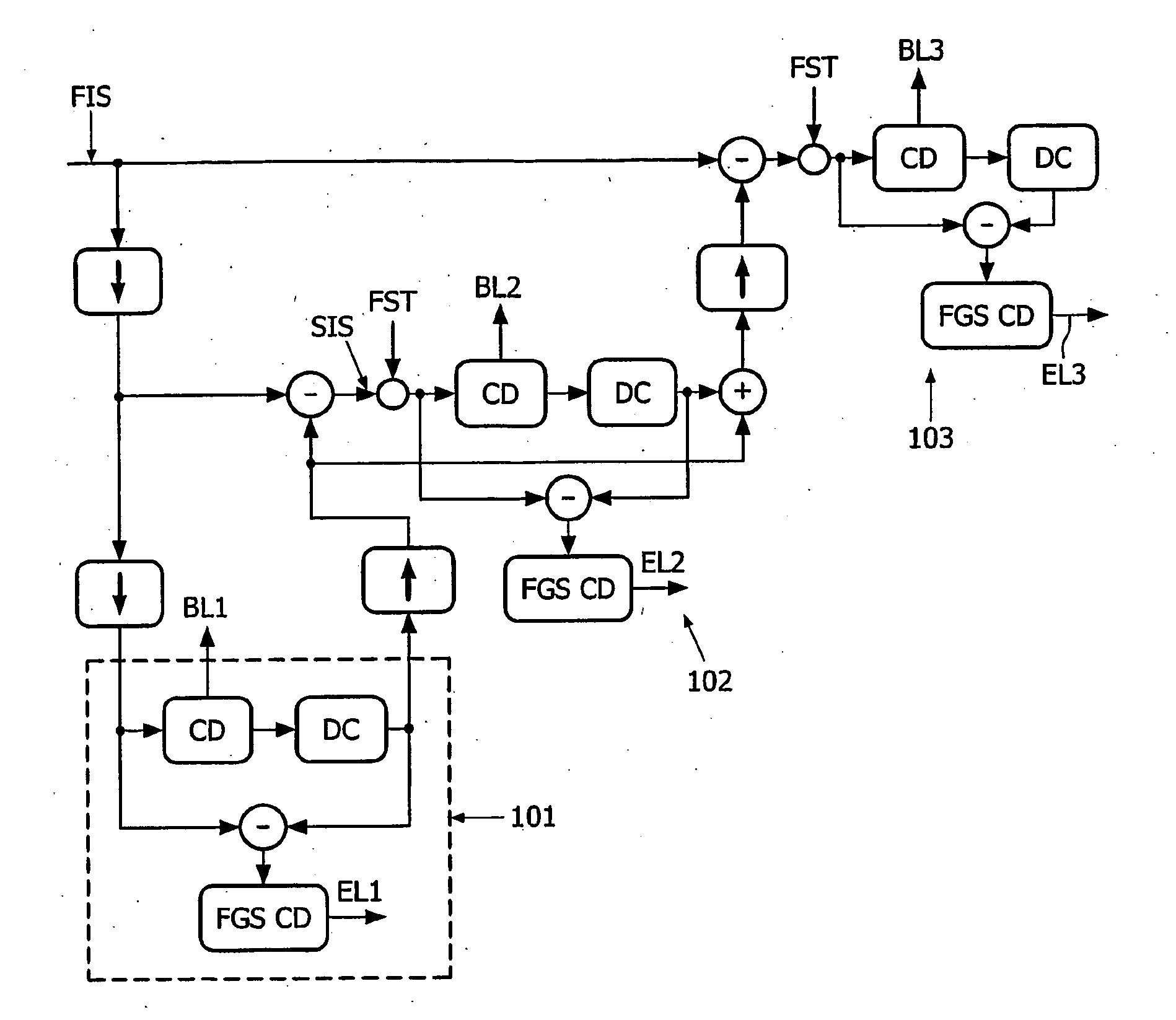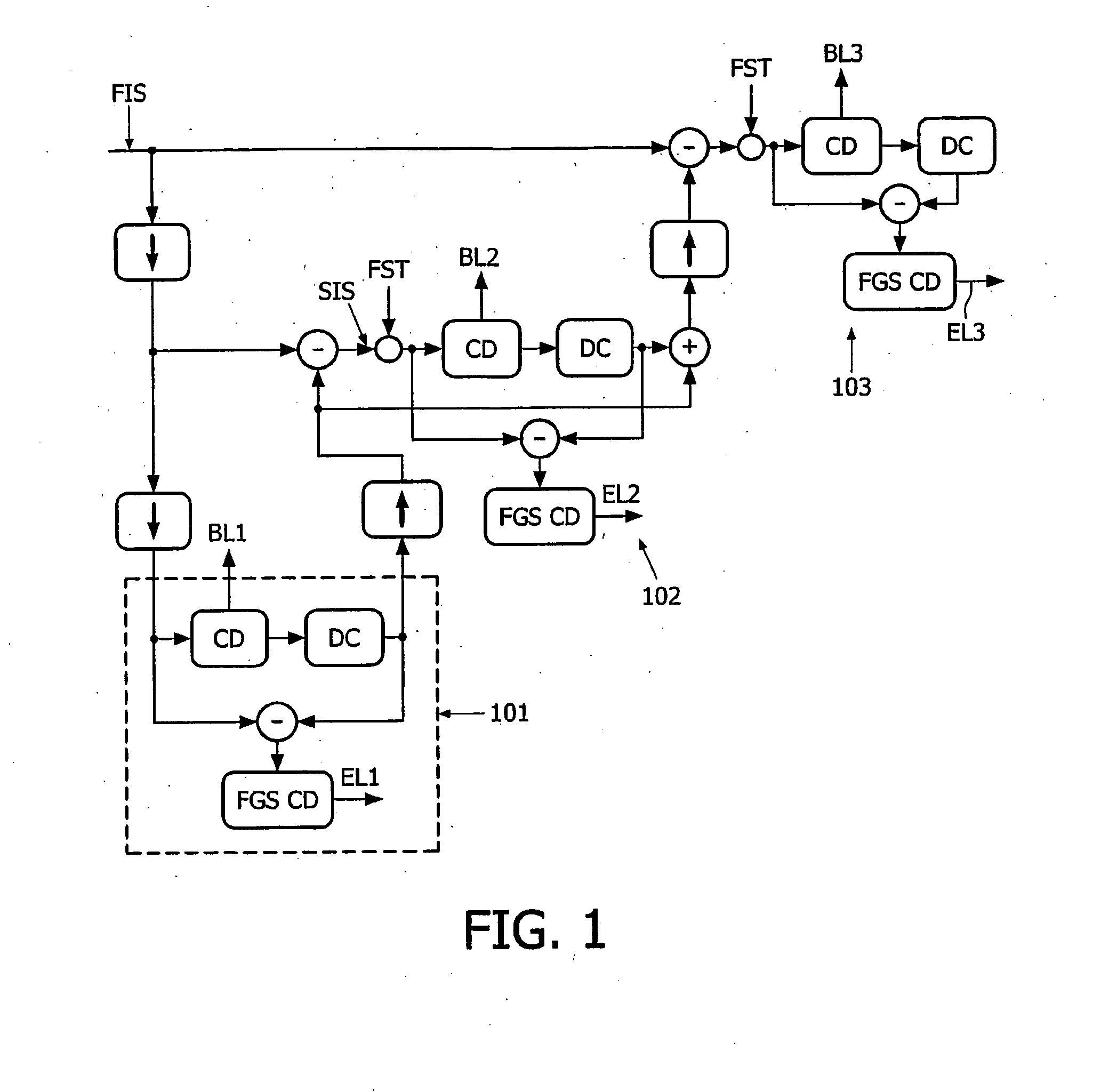Method of spatial and snr fine granular scalable video encoding and transmission
a scalable video and spatial technology, applied in the field of moving picture coding, can solve the problems of limited spatial scalability range, inability to work well on sequences with a lot of temporal redundancy, and the aim of altering the spatial resolution of an image, and achieve the effect of fine granularity of snr scalability and low bit ra
- Summary
- Abstract
- Description
- Claims
- Application Information
AI Technical Summary
Benefits of technology
Problems solved by technology
Method used
Image
Examples
Embodiment Construction
[0040]The scheme of the proposed main embodiment is depicted in FIG. 1. The illustrated coder comprises three successive stages (a first stage referenced 101, and two similar stages 102 and 103) generating three levels of spatial scalability and FGS quality enhancement layers for each spatial resolution. The non-scalable streams BL1, BL2, BL3 provide the base layers information, that comprise encoded data required for decoding of video with the minimal quality at three spatial resolutions. Improvement of quality may be achieved by adding the decoded enhancement layers EL1, EL3, EL3 to the corresponding base layers BL1, BL2, BL3. The enhancement layers are encoded by the FGS coders and provide the SNR scalability. Each higher resolution spatial layer compensates errors caused by low bitrate encoding of base layer of the previous spatial level. Only the encoded non-scalable base layers are used for the prediction of higher resolution signals, thus no drift error at the decoding side w...
PUM
 Login to View More
Login to View More Abstract
Description
Claims
Application Information
 Login to View More
Login to View More - R&D
- Intellectual Property
- Life Sciences
- Materials
- Tech Scout
- Unparalleled Data Quality
- Higher Quality Content
- 60% Fewer Hallucinations
Browse by: Latest US Patents, China's latest patents, Technical Efficacy Thesaurus, Application Domain, Technology Topic, Popular Technical Reports.
© 2025 PatSnap. All rights reserved.Legal|Privacy policy|Modern Slavery Act Transparency Statement|Sitemap|About US| Contact US: help@patsnap.com


